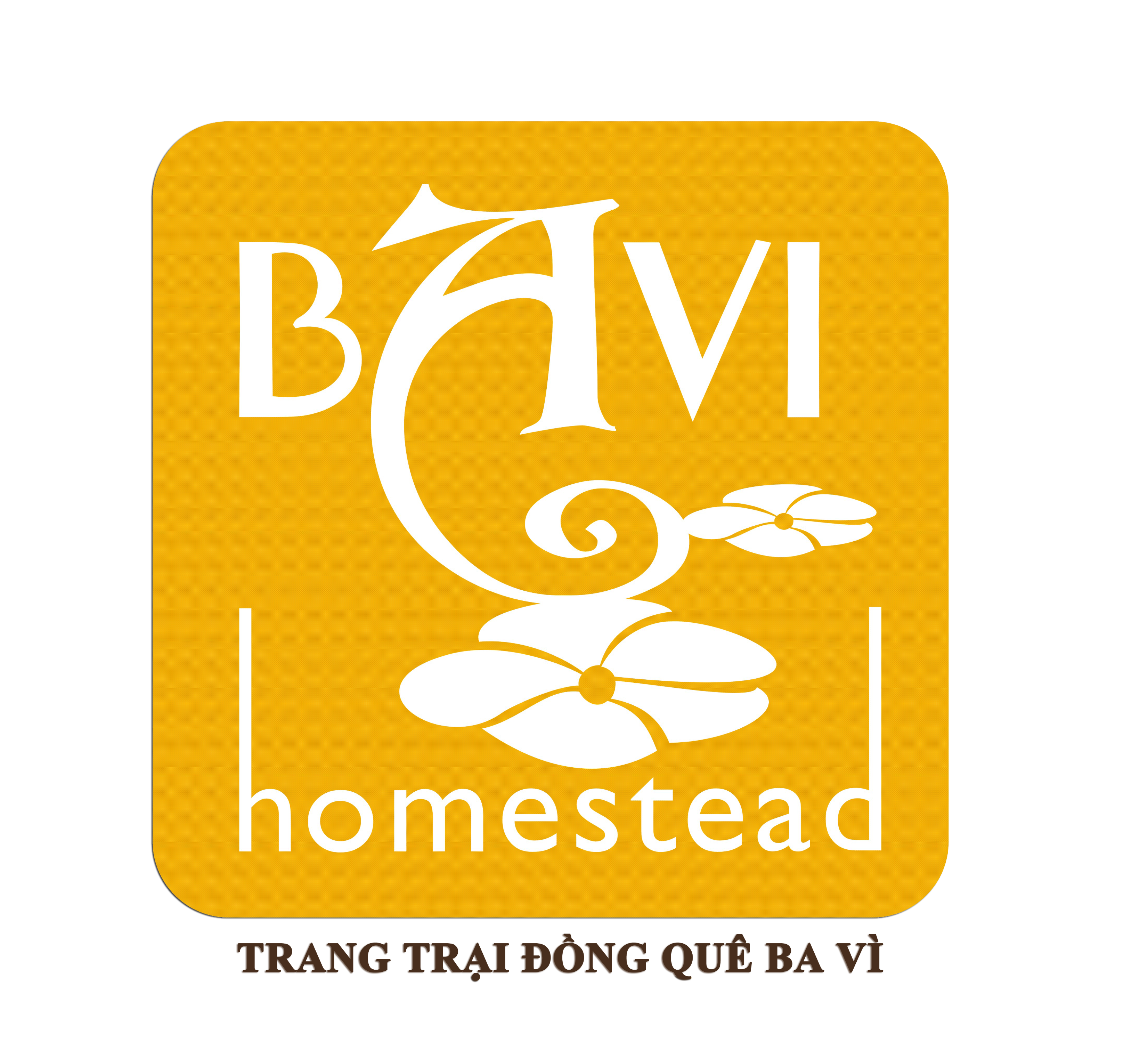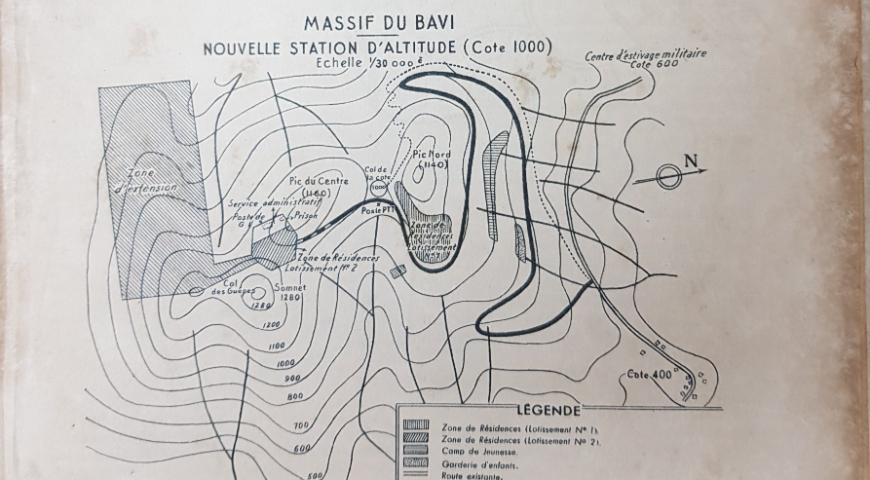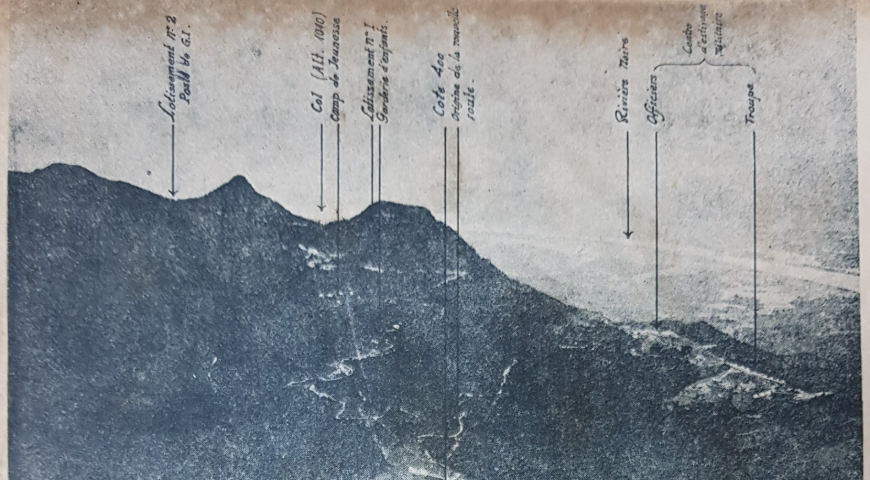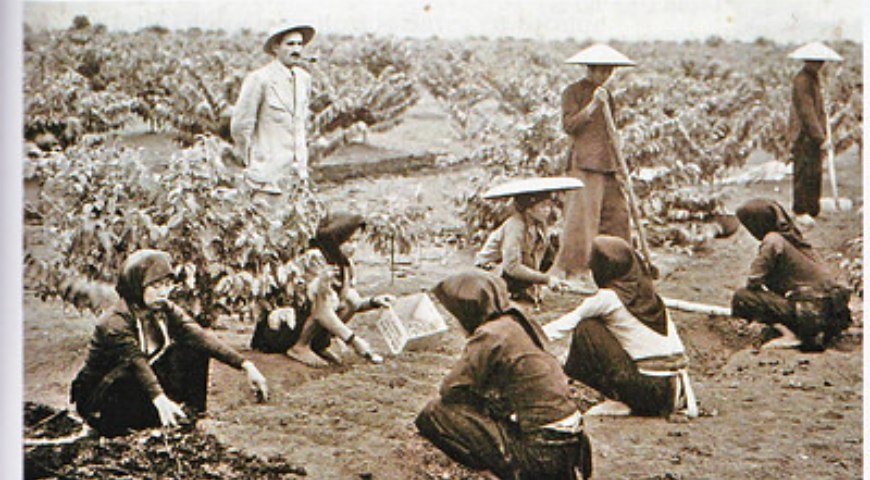I. Ba Vi French Architecture
"There are currently more than 200 ruins left by the French from hundreds of years ago in Ba Vi National Park!"
Ba Vi National Park is situated at an altitude of 1,100 meters above sea level, with a fresh and cool climate year-round. In addition, being only about 50 km from Hanoi, Ba Vì has preserved a strong French imprint since the early 1940s, when they chose it as a site for building resorts, agricultural research, natural resource exploitation, and high-level military facilities for soldiers.
1. The first expeditions, late 19th century
When Northern Vietnam was occupied and colonized by the French from 1873. By 1883-1884, during the process of establishing their governance apparatus, the French began sending expeditions to Ba Vì. They were impressed by:
+ Cool climate: Unlike the heat of the Northern Delta, Ba Vì has a pleasant highland climate.
+ Majestic landscapes: Rugged mountainous terrain, diverse primary forests.
+ Resource potential: The French recognized the potential for timber exploitation and agricultural development.
2. The first product - Coffee tree
In 1886, botanist Benjamin Balansa brought coffee and cinchona (used to treat malaria) seeds from Indonesia to experiment with planting in Ba Vì. This is the place where the first coffee plants in Vietnam were nurtured and developed. Ba Vi coffee not only serves the domestic market but is also exported to Europe.
3. The next phase, early 20th century - Planning and development
In 1902, for the first time, Muselier - the French Consul in Sơn Tây - infiltrated this mountainous region. The inscription at Vi Thuy (Tong) Pagoda shows that he had the Upper Temple renovated on the mountaintop in a flat area of about 2,000 square meters and had a path built to it. This road is marked on a 1/100,000 scale map. Starting from a path of the military camp, this road develops along the slope by the Da River up to a pass located between the Northern Peak and the Middle Peak, then follows the watershed path up to the highest peak.
Renovated in 1942, the path created a walkway through the forest. In 1942, the temple renovated in 1902 was no longer there. Today (in 1944), at that location, one can still see the house frame and fragments of bricks and tiles.
4. The first construction
After the exploration phase, recognizing its outstanding potential, the French began to plan and invest in Ba Vì more systematically, especially during the years 1900-1940.
In 1923, Mr. Lachaud - the French Consul in Sơn Tây - began constructing the road as it is today by extending it an additional 6km from Mr. Borel's livestock farms to an elevation of 400m. The road was completed by Consul Wintrebert the following year. Later, he suggested building a resort at an altitude of 800m, the current location of the Youth Camp. But the colonial government still refused to allocate funds to build the Ba Vì resort for the reasons mentioned above, so the road remained unchanged until 1937.
In this year, at an altitude of 400m, there were only 4 villas besides Mr. Borel's villa, which had been there before. Now, there are additional villas belonging to the Sơn Tây Consulate, Mr. Demolle (1929), and Dr. Joyeux (1935). From 1935 to 1939, this small resort developed an additional 12-room hotel and 12 more villas.
5. Building a luxury resort town in Ba Vi Mountain:
In order to save costs for French officials returning home on leave, Indochina Governor-General Paul Doumer planned to build resorts in the high mountains. After many surveys, Ba Vì Mountain was chosen as one of the ideal locations. The French villas were all designed with fireplaces to withstand the cold climate.
- Villas and hotels: Many resort villas were built at different altitudes such as 400m, 600m, 800m, and 1,000m to serve French officers, soldiers, and officials.
- Summer camp: Building a summer camp for the children of the French and colonial government officials.
- Church: The church at an altitude of 800m is a testament.
- Road system: Develop roads leading up the mountain to facilitate transportation and construction. For example, the road to Cote 630 was completed in 1942.
6. Military activities
Besides its role as a resort, Ba Vì was also used for military purposes. The French built several military structures and prisons.
- Colonel's residence and gun emplacements: At an elevation of 600m, there are remnants of the colonel's residence with barbed wire fences, stone walls surrounding it, and several medium machine gun emplacements.
- The political prison system: At an altitude of 1,000m - 1,100m on the western slope of Mount Tản Viên, the French built a secret and solid prison system to detain revolutionary soldiers.
7. Agricultural and forest resource exploitation:
The French also focused on exploiting the agricultural and forestry potential of Ba Vì. In addition to planting coffee, the French also preserved and planted forests. Since 1883-1884, the French have shown interest in Ba Vì as a site with rich flora and fauna. In 1932, reforestation was implemented with over 300,000 trees brought from nurseries.
8. Research and Exploration
The French also conducted exploration and research activities in Ba Vì to better understand the terrain, climate, and resources of the area.
Nowadays, many French constructions in Ba Vì are just ruins in the heart of Ba Vì National Park, becoming destinations that attract tourists to learn about history and explore ancient architecture.
The remaining ruins today are a testament to the scale of investment and the importance of Ba Vì in the French strategy in Indochina.
II. The history of dairy cattle farming development in Ba Vì
The French had dairy farming activities in Ba Vì. This is one of the important agricultural activities they developed in this area during the colonial period.
Recognizing that Ba Vì has a cool, fresh climate, abundant water sources, and natural pastures favorable for livestock farming, especially dairy cows. They brought dairy cattle breeds from abroad to raise, with the aim of supplying milk and dairy products to the military, French expatriates, and a segment of the Vietnamese population.
III. The condition of French constructions in Ba Vì after the French withdrawal (after the Geneva Accords, 1954)
The structures they built in Ba Vì (villas, churches, prisons, military bases) have been abandoned, either destroyed in the war, no longer in use, or gradually overtaken by nature. That is why today we see the moss-covered, dilapidated remnants of French architecture in the heart of Ba Vi National Park.




